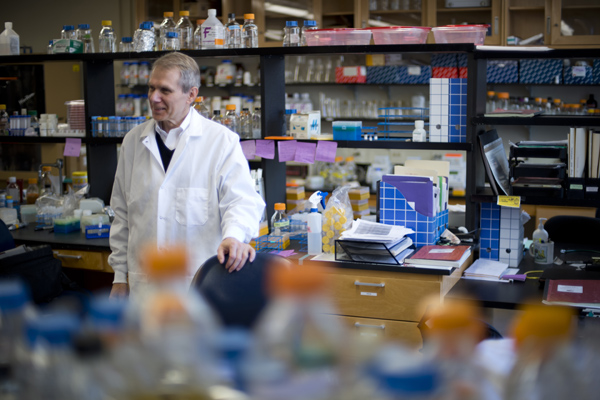Advances in Lyme Disease Treatment
 |
Prof. Kim Lewis |
|
|
Preventing chronic disease
“Time is of the essence. According to the Centers for Disease Control and Prevention, about 300,000 people are diagnosed with Lyme disease in the U.S. each year. The disease is transmitted by ticks primarily carrying the bacterium Borrelia burgdorferi, though a new less prevalent bacterial species, Borrelia mayonii, was identified by Mayo Clinic researchers in February.” The Lewis research group at Northeastern University are developing new Lyme Disease Treatments to combat the bacteria.
A new regimen for Lyme Disease Treatment
“Lewis and his colleagues are providing focus to the problem of how to prevent the subsequent rise of the chronic condition [by developing four new Lyme Disease treatments]. A subpopulation of B. burgdorferi cells, they discovered earlier, are “persister” cells—they are alive but lie dormant, in a sporelike state. Because antibiotics attack only actively functioning bacterial cells, persisters escape the onslaught. However, once the antibiotic has been flushed from the system, the persisters “wake up,” says Lewis, dividing and multiplying until an army of progeny infect the host.” -Quoted from Thea Singer’s Northeastern University COS News Article
